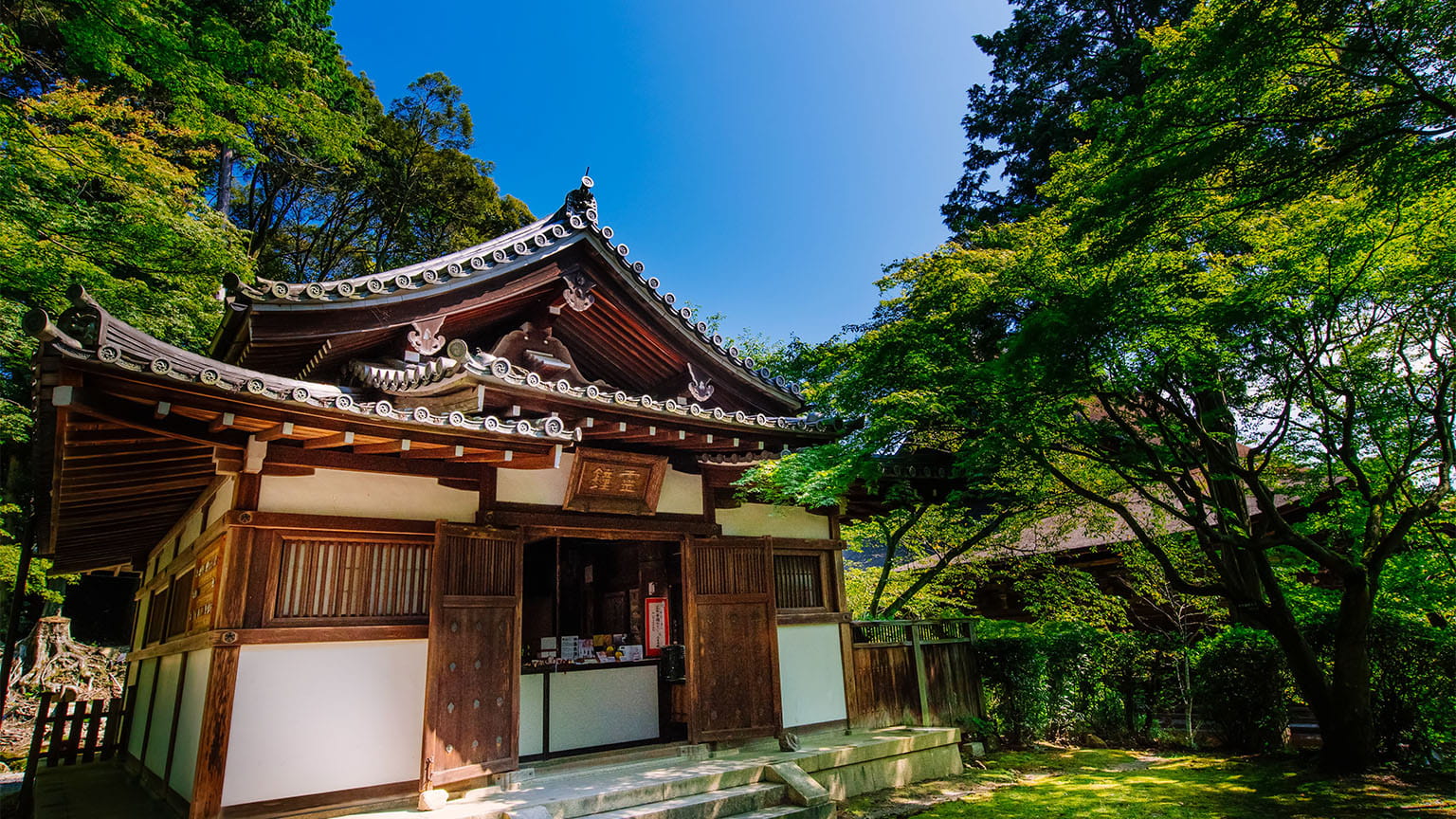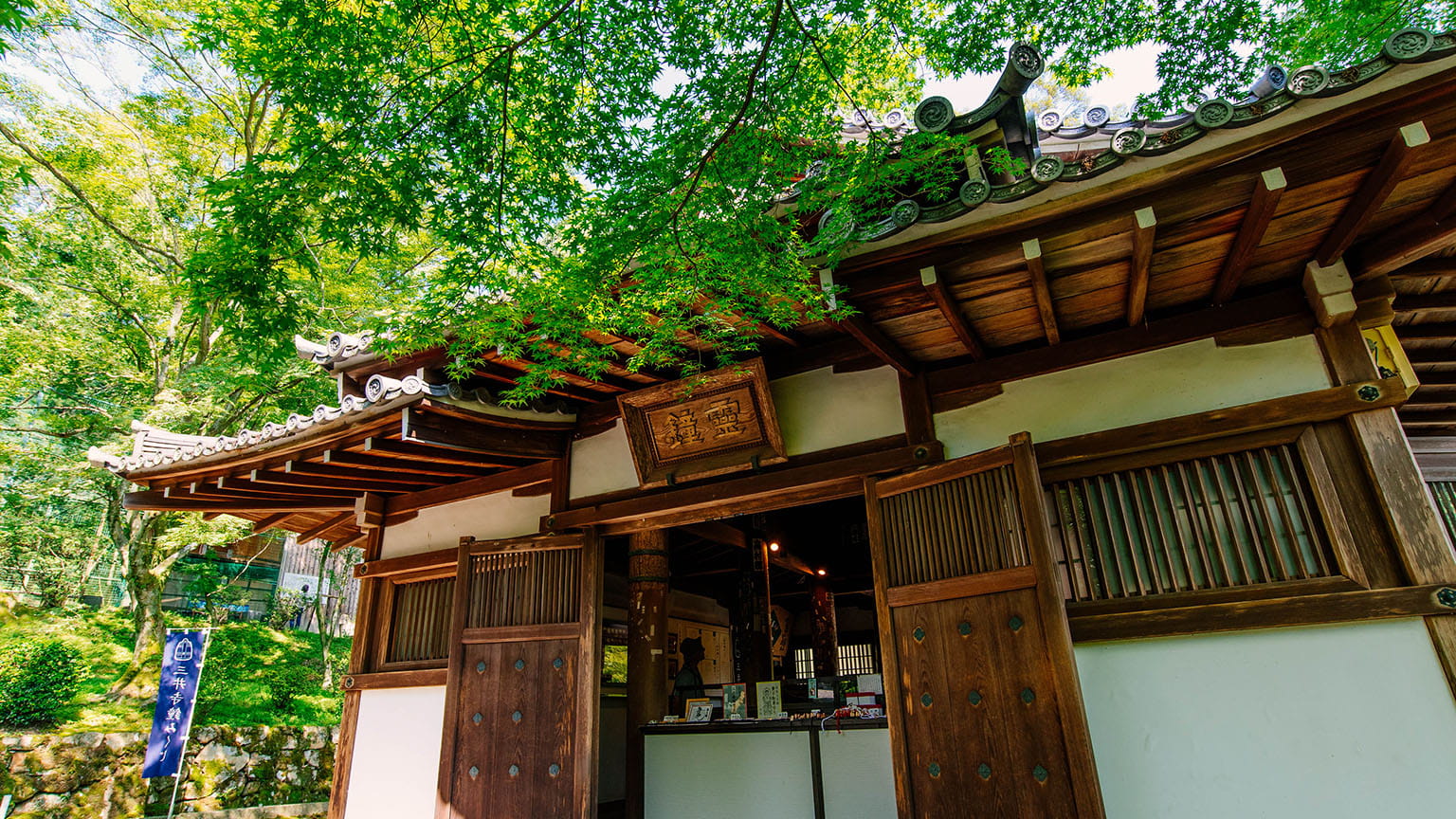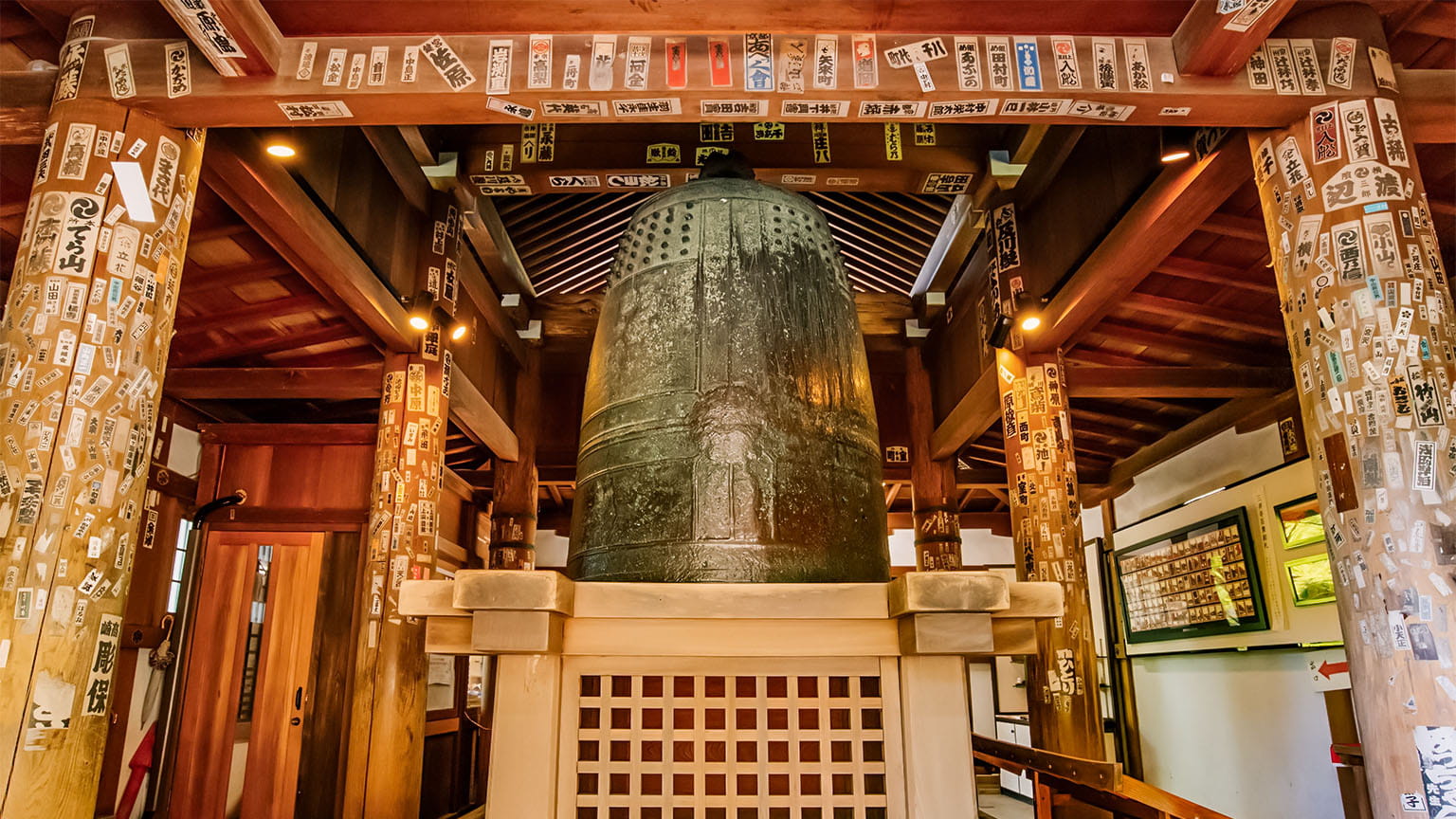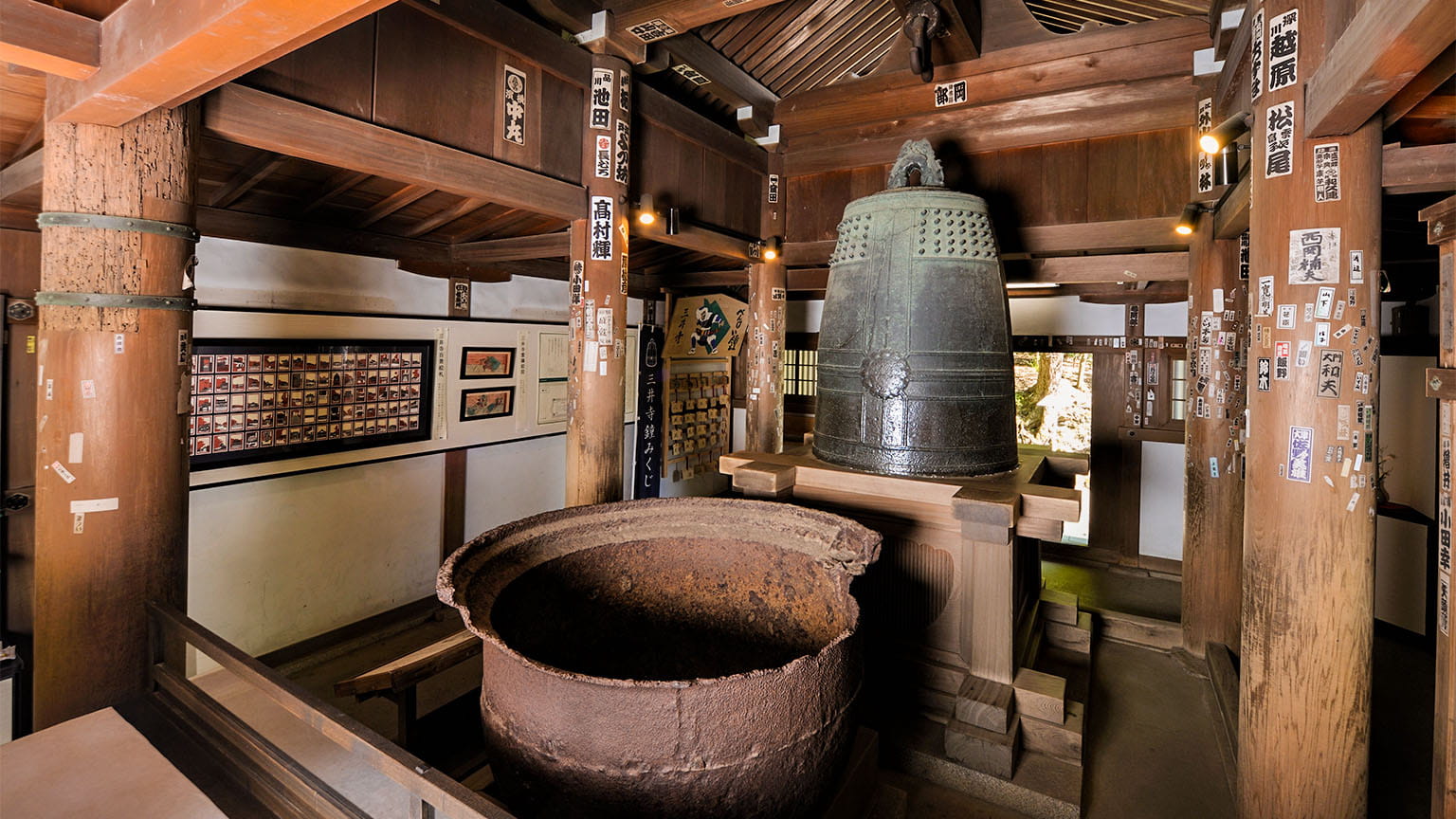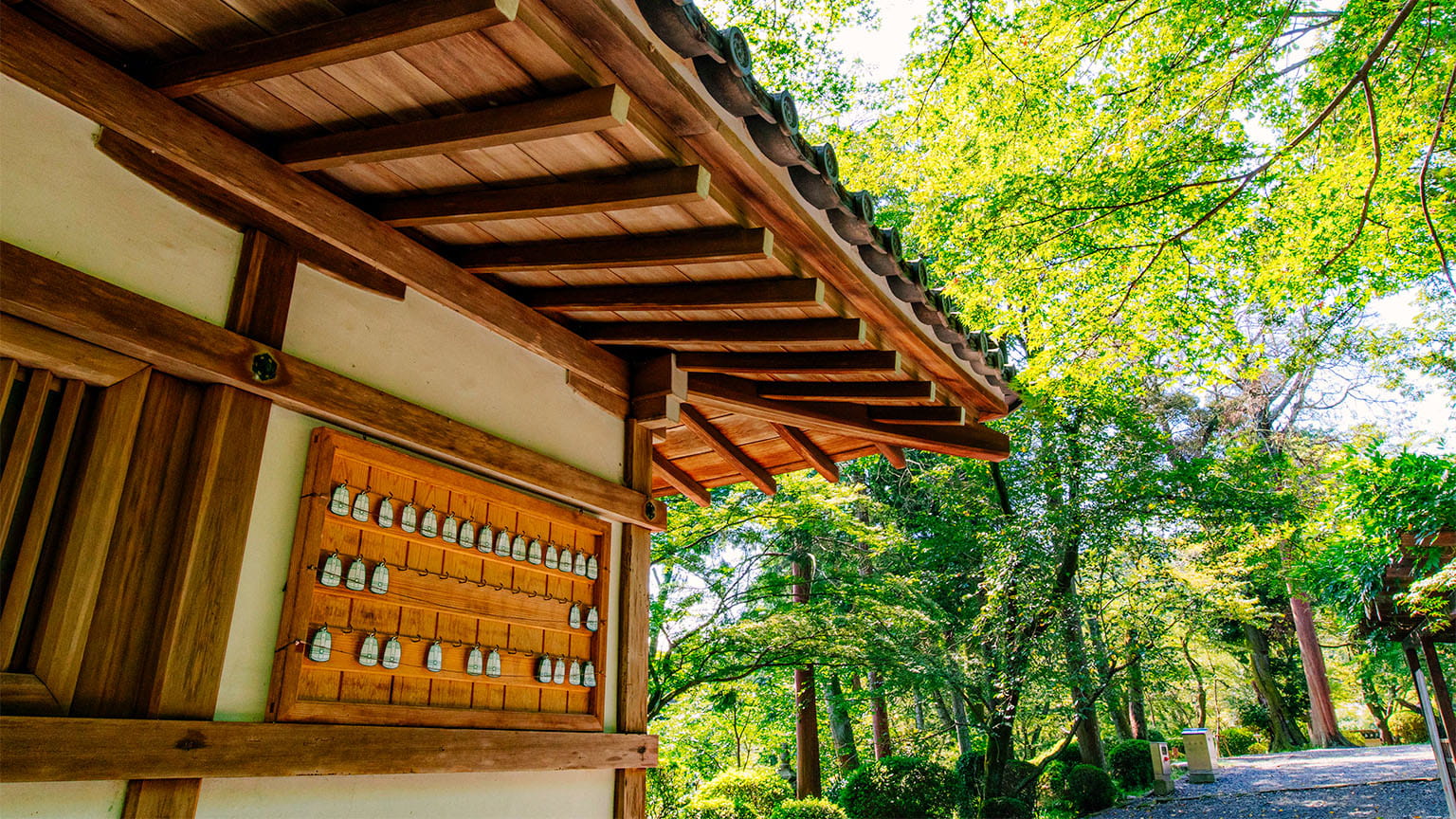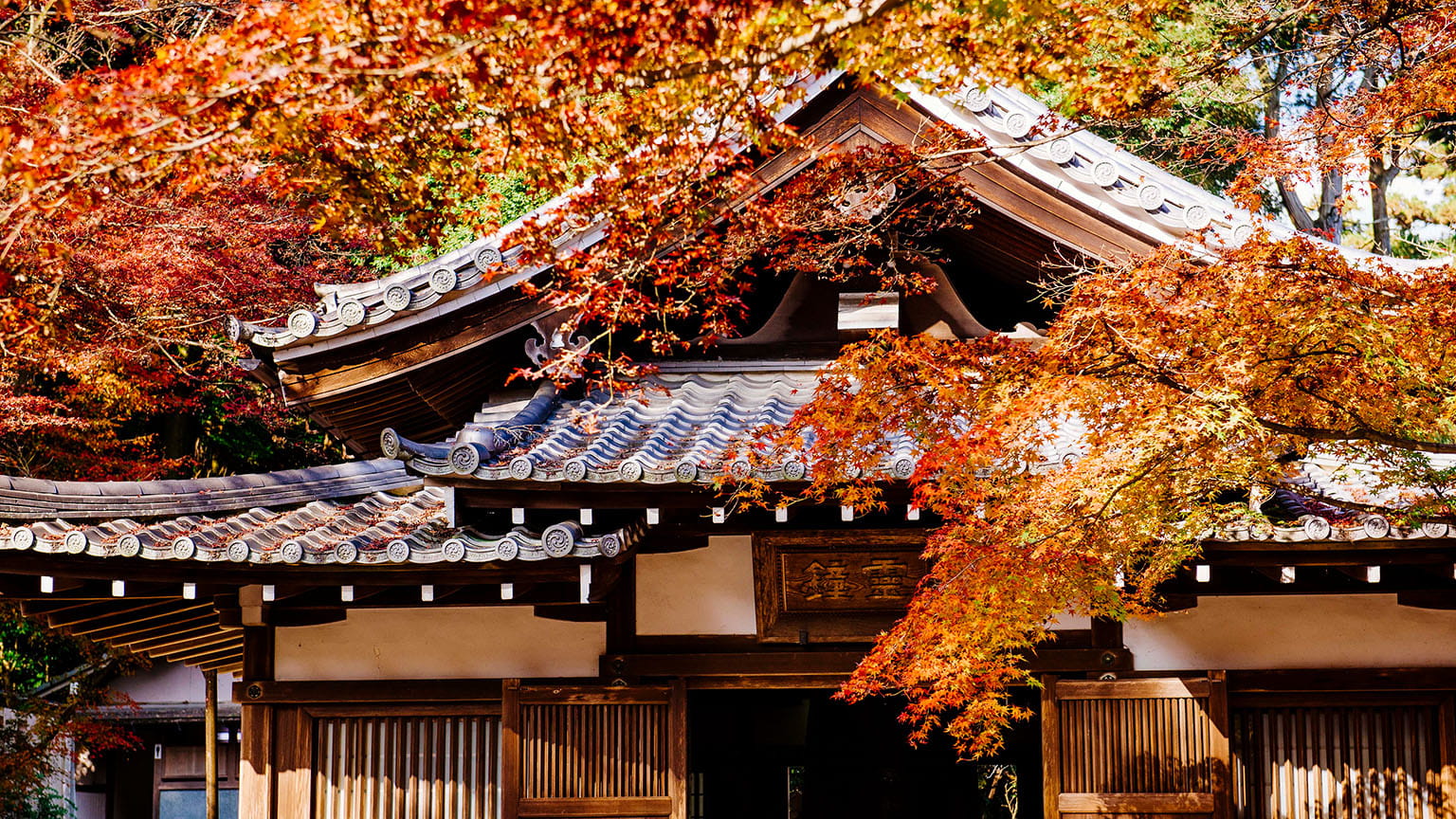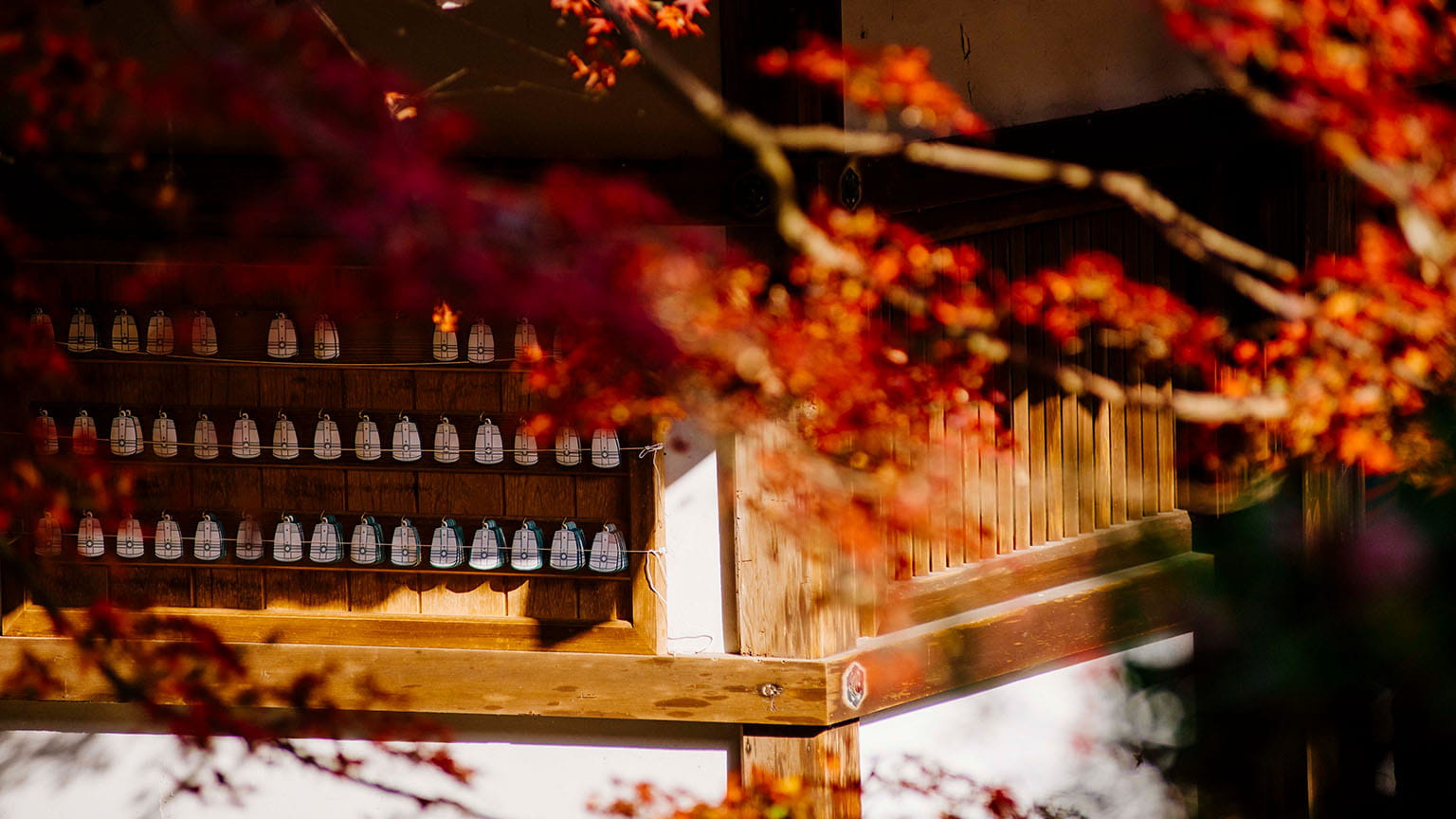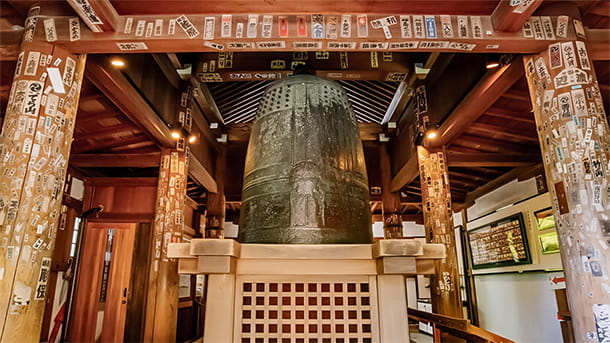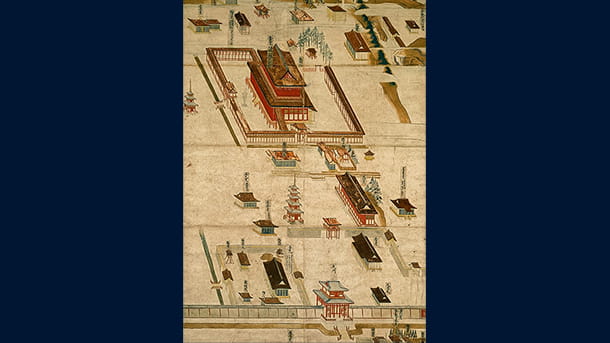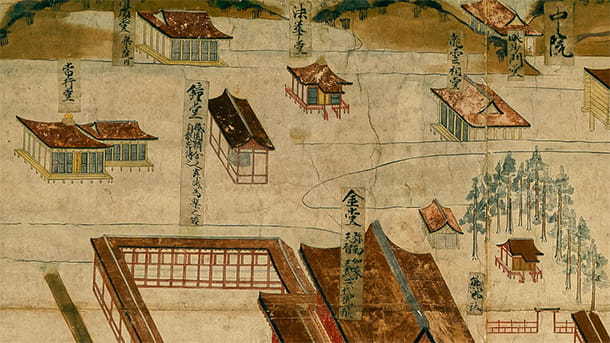“Nara period”
The period of Heijo-kyo which means that the capital was moved to Nara. It lasted over 70 years (710–784), and seven emperors, Genmei, Gensho, Shomu, Kenko, Junnin, Shotoku, and Konin reigned. In art history, the Hakuho period (670–710) is the early Nara period and the above period is treated as the late Nara period named the Tenpyo period (710–784). Nara Imperial Court.
“Bonsho”
It is called bonsho, a hanging bell used in temples, other than Chinese instrumental bells. Most are hung on a bell tower and rung by a wooden bell hammer.
“Musashibo Benkei”
Musashibo Benkei (?–1189) was a monk in the early Kamakura period. His childhood name was Oniwakamaru, a son of Kumano Betto (a steward of the Kumano shrines). He is a popular subject of Japanese folklore as he appears in Gikei-ki (the records of Yoshitsune), yokyoku (a vocal part of Noh), kowaka-bukyoku (Japanese recitative dance) and so on. According to folklore, he named himself Musashibo and stayed in the west area of Hieizan Enryakuji Temple. Later, he served Minamoto no Yoshitsune and gained fame. He was always loyal to Yoshitsune even during his downfall. He saved Yoshitsune at the barrier of Ataka and later he died at the Battle of Koromo River.
“Mt. Hiei”
The mountain to the northeast of Kyoto City, lying on the border between Kyoto and Shiga Prefectures. It is famous for being a sacred mountain of Ojo Chingo (protecting the imperial household) in ancient times. It has two summits on its mountain ridge: Ohie or Mt. O-dake (848 meters) in the east and Mt. Shimei-dake (839 meters) in the west. The head temple of the Tendai sect, Enryakuji Temple, is located on the mountainside in the east.
“Tawara no Tota (Hidesato)”
A member of a powerful family in Shimotsuke in the mid-Heian period (794–1185). He was reportedly a descendant of Fujiwara no Uona, the Minister of the Left. A military constable in Shimotsuke Province. In 940, he defeated Taira no Masakado in the rebellion, and for his achievement, he was given the position of the Governor of Shimotsuke. There was much folklore about him: a master of archery and the extermination of a giant centipede in Mt. Mikami. The years of his birth and death are unknown.
“Kamakura period”
The name of the period that lasted for approximately 150 years from when Minamoto no Yoritomo founded the shogunate in Kamakura until Hojo Takatoki’s death in 1333.
“map of the old layout of the Onjoji Temple grounds”
A map of the precinct is drawn on a set of five hanging scrolls: the northern section, the middle section, the southern section, san-bessho (three branches) and Nyoiji Temple. Taking the records such as “Jimon Denki Horoku” (the temple record) into account, the temple view in the late Kamakura period was drawn. It is a valuable reference showing the position of temples in Miidera precinct in medieval Japan. An Important Cultural Property. Made in the Kamakura period in the 14th century.


